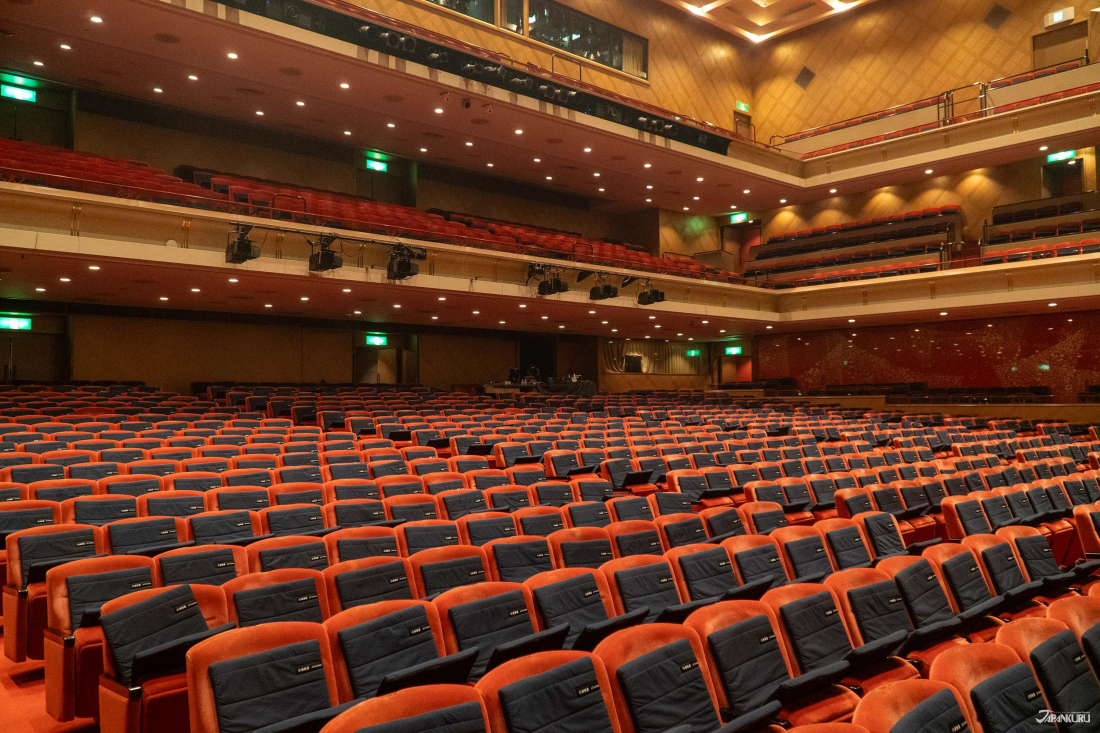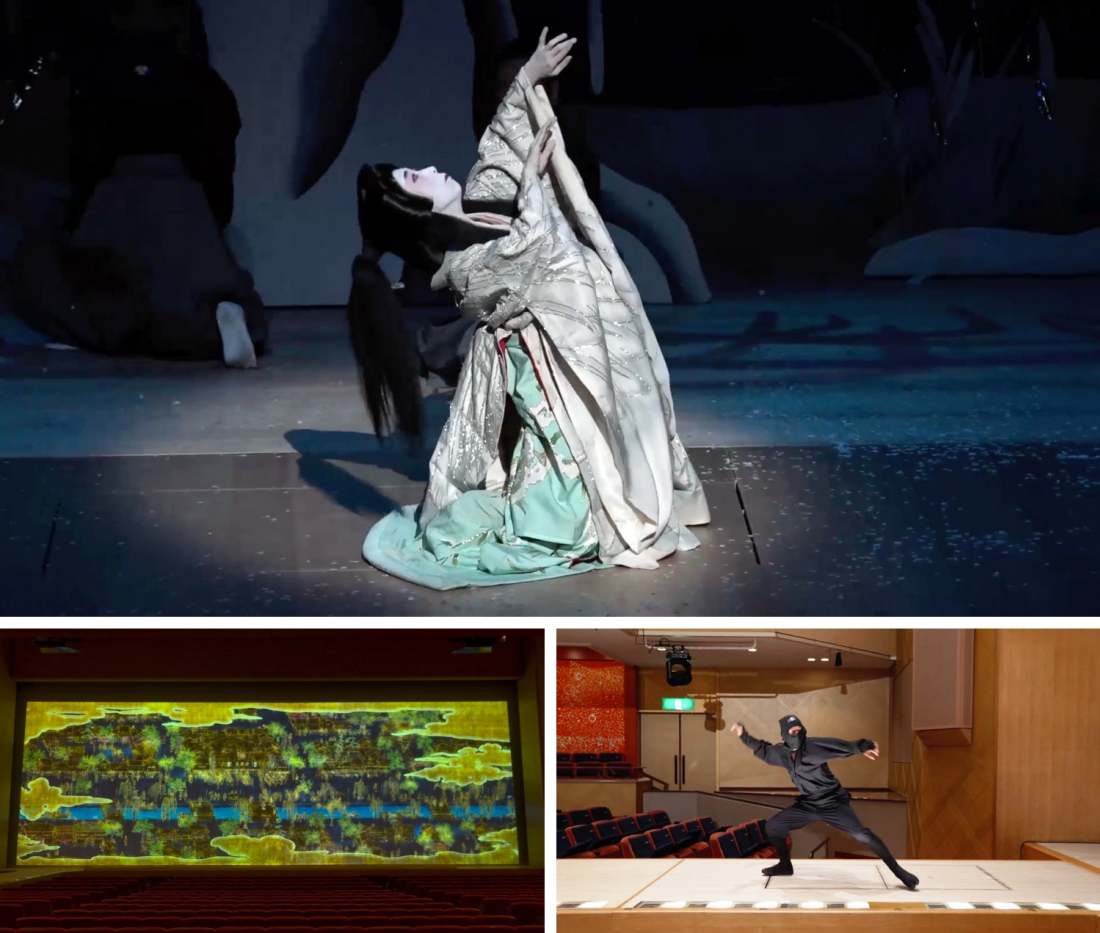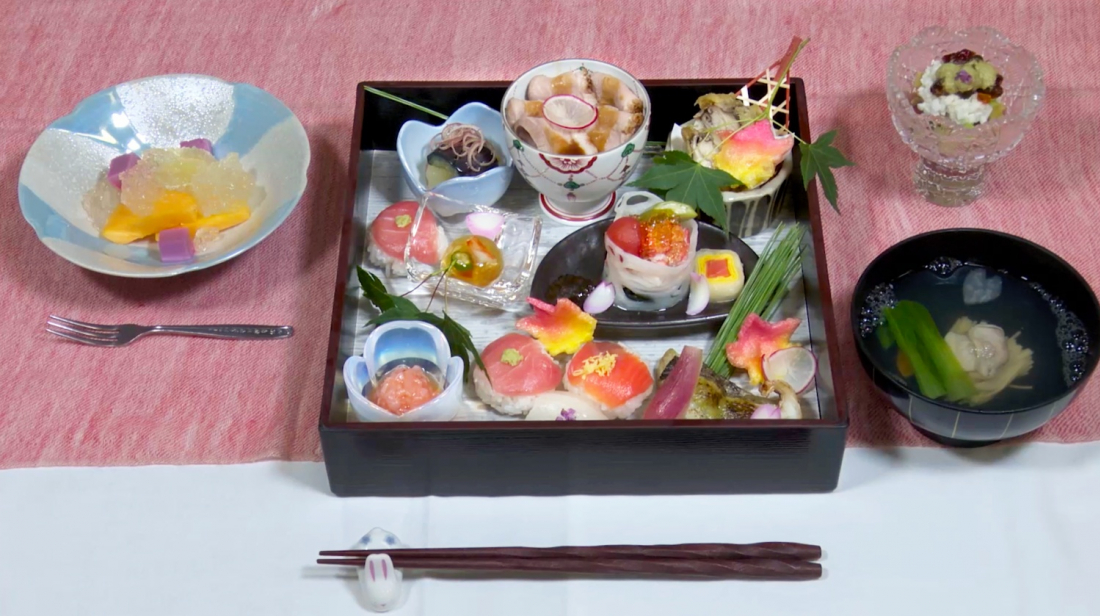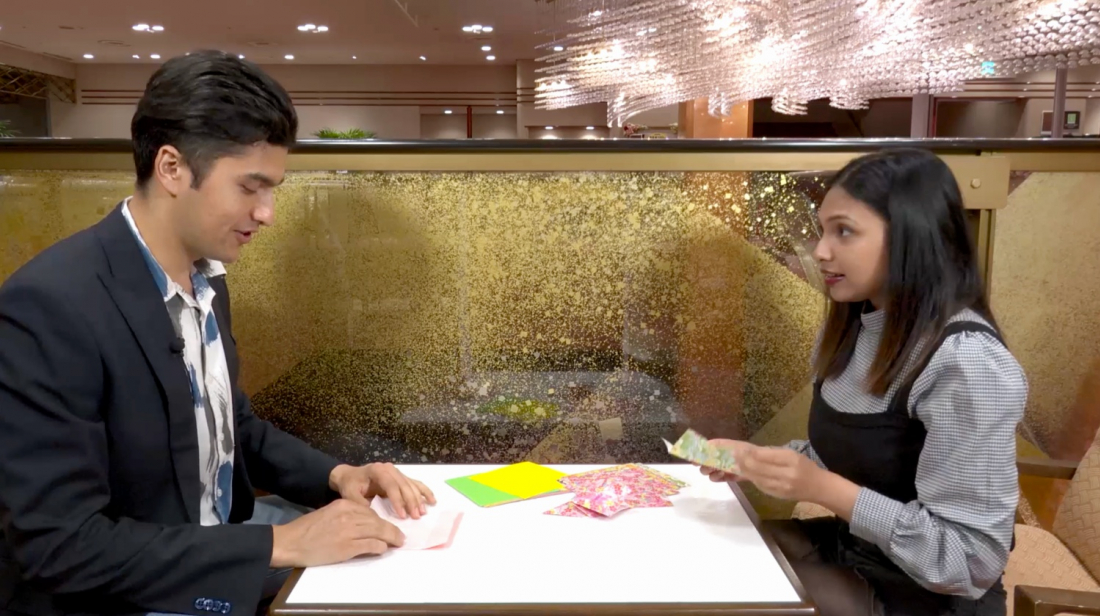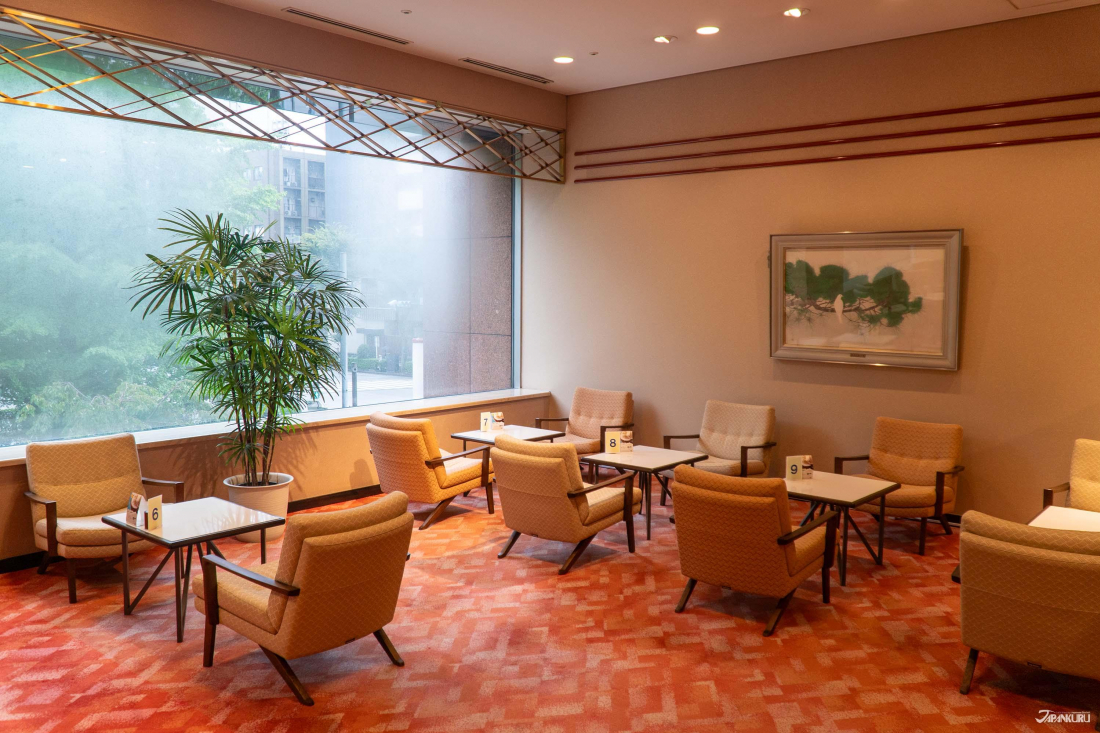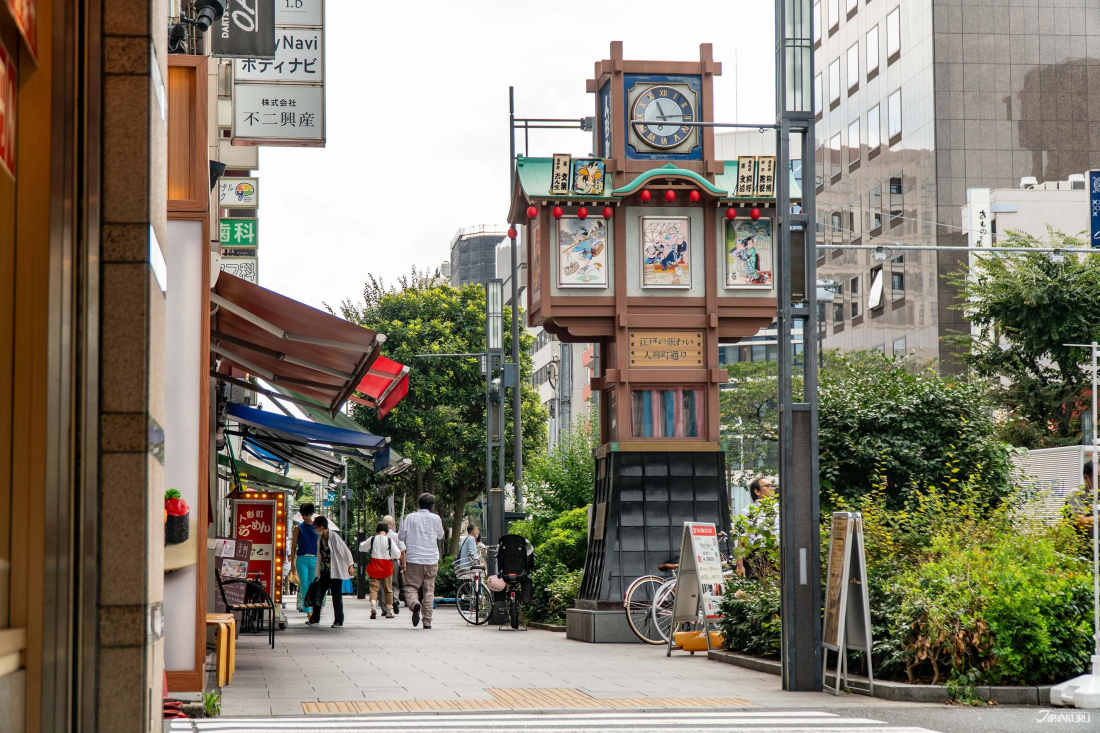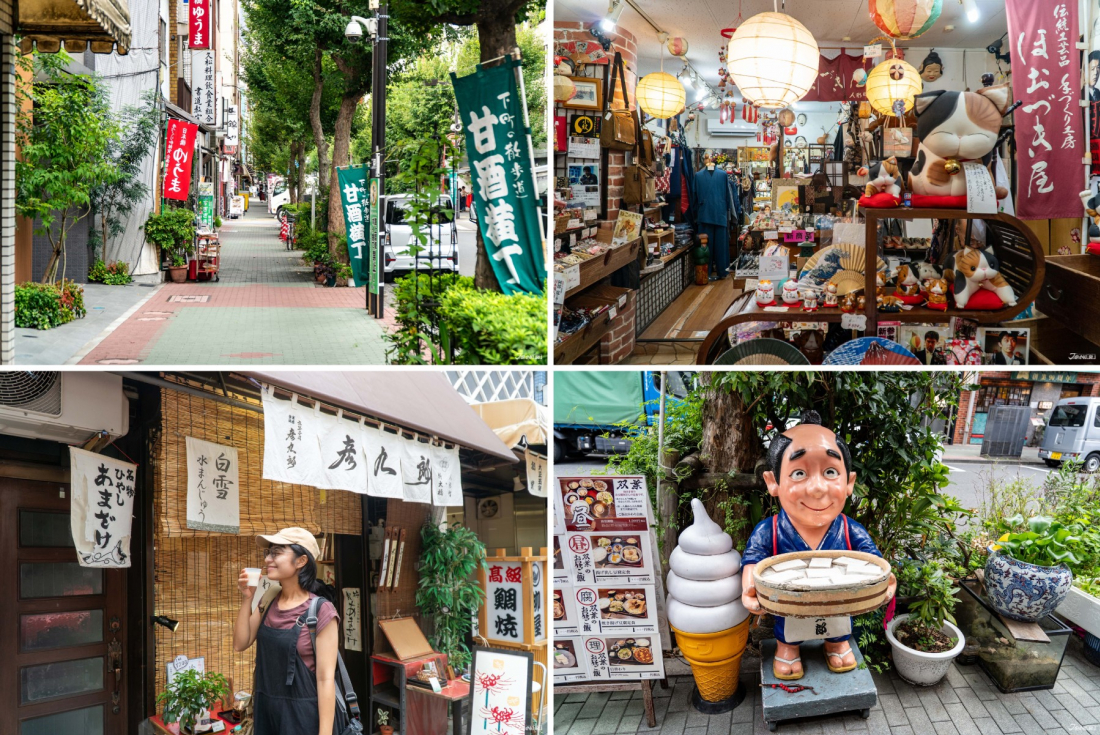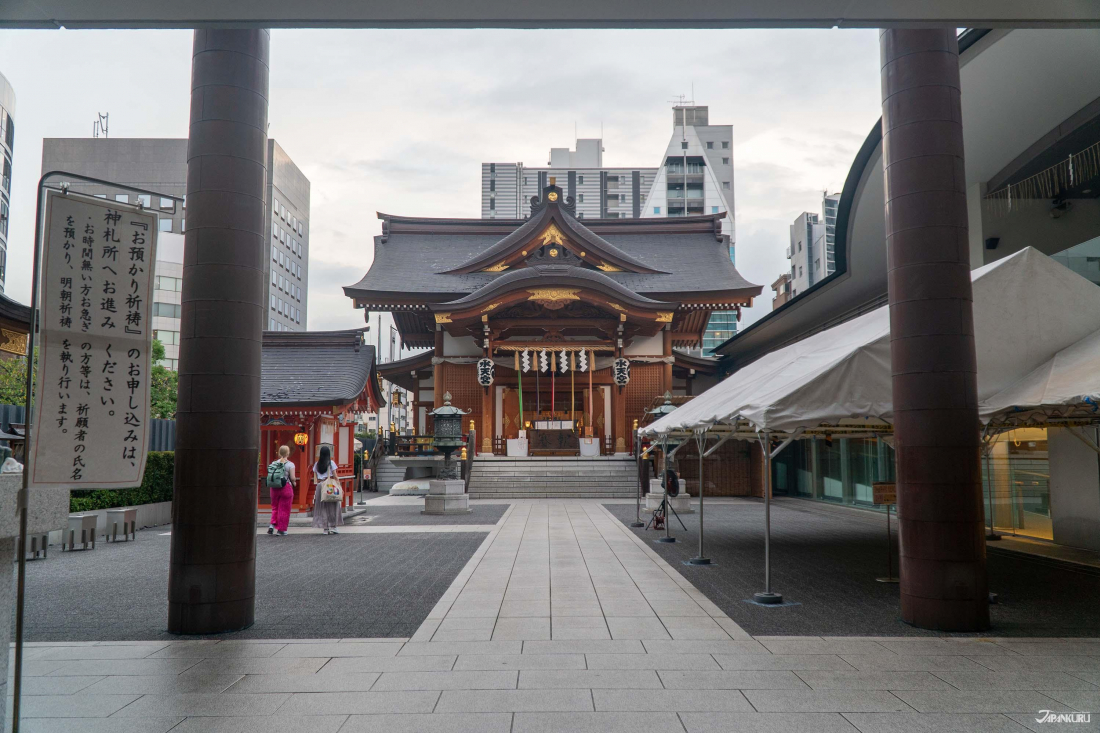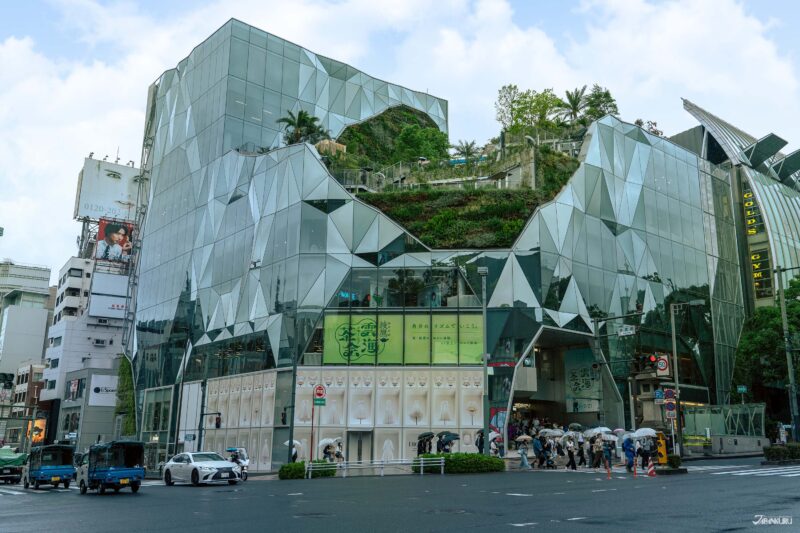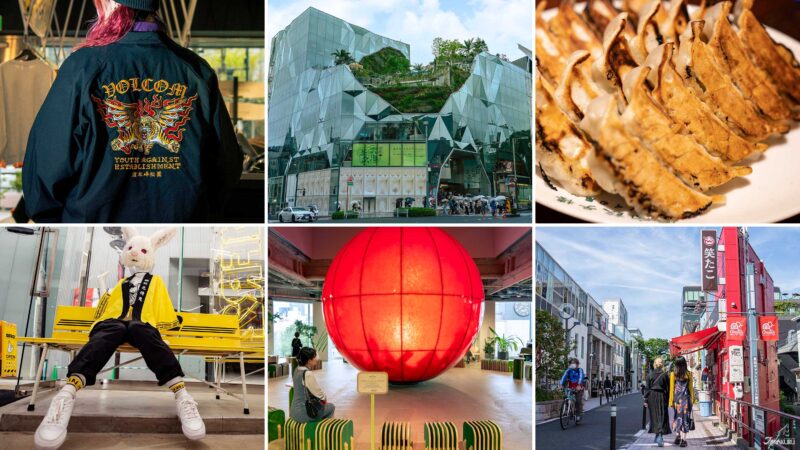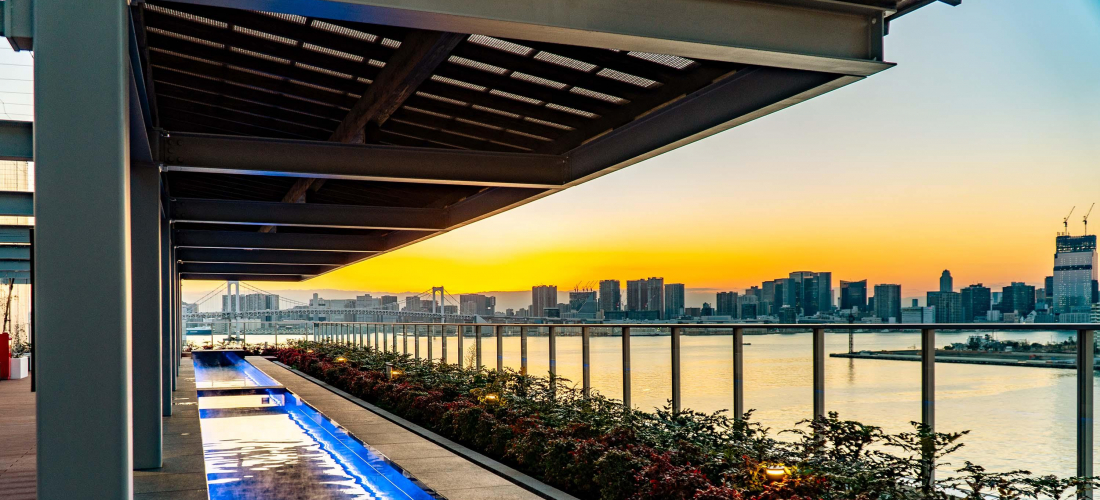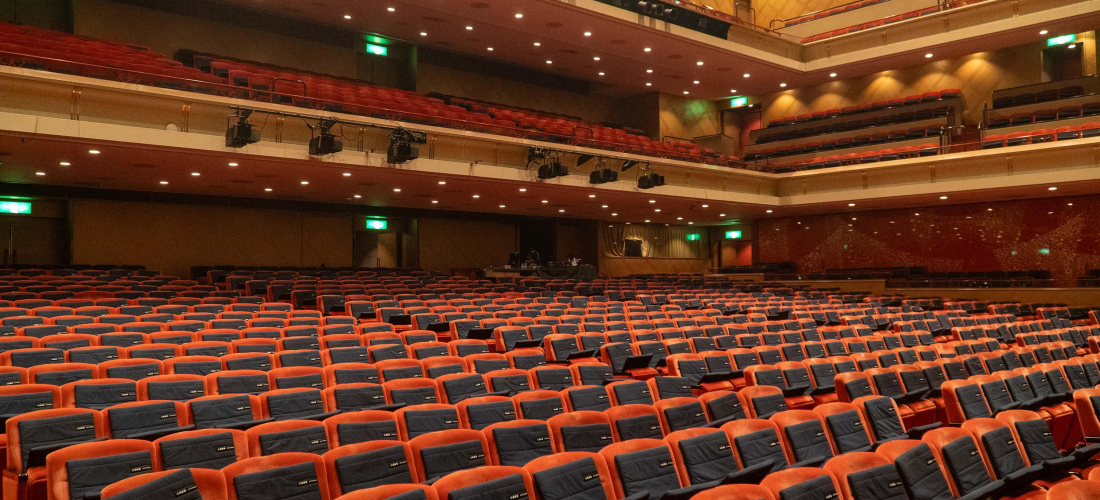
CONTENTS
Meijiza is a beloved landmark in the world of Japanese arts and theater, and this year, they’re celebrating 150 years with great performances and much more.
150 Years of Meijiza History
Meijiza is Tokyo's oldest theater still in business, and to this day the modern 1368-seat hall is a favorite among performing arts lovers in the city. When it was founded in 1873, however, Meijiza went by a different name ("Kishoza"), and it earned an early reputation as one of Tokyo's most popular kabuki theaters. By the year 1893, the Meijiza name had taken over, but history was tough on the busy theater, with Tokyo's infamous raging fires burning down the building multiple times over the decades. We can only be grateful that the performing arts community helped Meijiza to persist despite the setbacks, repeatedly rebuilding with new facilities and a few new names along the way. Over the years, between the fires, Meijiza became a major name on the Tokyo scene thanks to fabulous performances in an increasing variety of genres, often welcoming beloved actors and kabuki performers on stage, and hosting premiers for new and innovative works. A century and a half of Tokyo performing arts history has made Meijiza what it is today, and Tokyo theater-goers are clearly eager to see what the next 150 years will bring as it continues to evolve.
These days, performers of all kinds walk the Meijiza stage, and the yearly schedule always includes a wide variety of shows: musical theater, serious drama, popular musicians belting out Japanese classics, comedy shows, and of course traditional Japanese performances like kabuki. To celebrate 150 years of Tokyo theater, Meijiza is putting on a major anniversary event called "Marutto Meijiza" for the end of 2023, featuring traditional Japanese dance, beautiful costumes, talented performers, lots of fun activities, and even a peek backstage behind the curtains!
Meijiza Theater (明治座)
2-31-1 Nihonbashihamacho, Chuo City, Tokyo
Official Website (jp) | Upcoming Shows | Tickets
Anniversary Events: Marutto Meijiza
See Traditional Dance and Ninja Acrobatics on Stage
The name "Marutto Meijiza" (まるっと明治座) means something along the lines of "The Complete Meijiza," and it's an event designed to look back on the rich Japanese culture that Meijiza has cultivated over its long history. But even before the curtain is raised, this special anniversary event is bringing Meijiza all the way from the 19th century to the 21st. While the audience finds their seats, the event starts with a unique work from the digital art collective TeamLab, with scenes of nearby Nihonbashi as it might have looked when Meijiza first opened, projected as a "digital curtain" on stage. Not only does the moving work of art resemble a digitalized version of traditional Japanese paintings, but it actually changes to reflect the weather outside, and even the shifting of the season! Of course, the real excitement is still to come. One of the highlights of Marutto Meijiza is a performance of "Fuji Musume," also known as "The Wisteria Maiden," a piece of traditional Japanese dance ("nihon buyo") born from kabuki theater. First performed almost 200 years ago, Fuji Musume is still one of the most popular dances of its kind, showing off the elegance and intricacy of Japan's kabuki traditions. The show at Meijiza shakes things up by following this traditional dance with a portion that shines a light on a very different part of Japanese culture: ninjas. Skilled performers sneak across the stage and perform acrobatic feats, all while guiding the audience through the history of ninjas in Japan! These two performances include subtitles in three languages (English, Korean, and Chinese), so audience members from all over the world can enjoy this deep dive into Japanese culture without missing a thing.
Enjoy an Intermission Meal
One of the benefits of seeing any kind of show at Meijiza is the theater's famously delicious bento boxes offered during intermission. Depending on the show, bento offerings differ, often taking inspiration from the themes that appear on stage. For Marutto Meijiza, it only makes sense that the meals are full of traditional Japanese delicacies, carefully arranged to bring out both flavor and color. (Exact contents may vary from the photo above.) With performances at midday and in the evening, a Meijiza bento is perfect for lunch or dinner, and it's a fun chance to try the kind of classic Japanese cuisine that's often found at fancy restaurants.
Take Pictures, Throw Shuriken, and Try Your Hand at Origami
After the performance, there's still a lot to enjoy at Meijiza during their 150th anniversary event. Not only can you take pictures with many of the performers, but for anyone inspired to pick up some ninja skills after watching the show, there's a workshop where you can learn to throw shuriken (ninja stars) like a natural. Another workshop focuses on origami, teaching you the Japanese art of folding paper into a variety of fun shapes. Meijiza even has a unique gallery set up, called the "Meijiza Digital Art Museum," with some of the theater's treasured paintings collected over the past century and a half on display, and convenient QR code labels that jump to full descriptions.
Peek Backstage for Some Theater Magic
One of the most exciting parts of this special anniversary event is the Backstage Tour, a unique chance to go behind the scenes and see how a simple stage can transform into any number of shapes and configurations for Meijiza's many varied performances. Tour participants will get the rare chance to see how actors are able to dramatically rise onto stage or disappear in an instant, and then get an up-close look at what traditional kabuki theaters call the "naraku," a word that translates to "the underworld" but really refers to the space underneath the stage. After seeing a full performance on the Meijiza stage, a tour of its inner workings is the perfect way to finish off a trip to the theater!
Marutto Meijiza (まるっと明治座)
Dates: December 5~7
Official Event Page (en) | Tickets Available at KKday (en)
Make the Most of Meijiza
For theater-goers who arrive with plenty of time to spare, or those who aren't quite ready to leave after the show ends, Meijiza has shops and a lounge to check out. The shops on the third floor sell a surprisingly wide variety of products, from food and drinks to accessories, and even women's fashion. If you get to the theater early, you can browse the snack options from all over Japan to choose the perfect intermission nibbles (although the bento won't leave much room in your stomach), and you might find some great souvenirs too. One surprisingly popular option is the saikyo-yaki, which consists of salmon, Japanese mackerel, or other fish that's marinated in miso and grilled to bring out a natural sweetness and tender texture. Saikyo-yaki is often used in Meijiza's bento meals, but you can also take it home to enjoy later!
For a cup of coffee or a bite to eat, Meijiza has an elegant lounge on the second floor, only accessible to ticket-holders inside the theater. The comfortable seating feels exclusive, with tall windows looking out onto the street below, and it's a convenient place to relax with some traditional Japanese sweets or a cup of coffee before the show starts. During the Marutto Meijiza event, the lounge is also offering some extra drinks and snacks for a limited time only, all inspired by the traditional Japanese performance.
Explore Meijiza’s Tokyo
Meijiza is right next to Hamacho Station, which is convenient for any audience members rushing to make it to their seats on time, but the theater is also an easy walk from Ningyocho Station and the bustling Ningyocho neighborhood. A show at Meijiza and an afternoon exploring the sights of the surrounding neighborhood is a great recipe for a unique day in Tokyo, giving you the chance to see some of the city's best-kept secrets!
Fun fact: Ningyocho literally means "doll town," a name it got from the many professional dollmakers who once crafted their wares and sold them in the area. Nowadays, there are a pair of iconic mechanical clock towers in Ningyocho that display some of the little dolls once made nearby.
Whether you've got a full day to devote to Meijiza and Ningyocho, or just a little extra time before the show starts, a walk through Amazake Yokocho is a must. This little street runs directly from the southeastern exits of Ningyocho Station almost all the way to Meijiza's front door, and it's dotted with traditional shops selling Japanese food or crafts. Stop in at Yuma for a selection of traditional handicrafts made with Japanese fabric, from small pouches and accessories to cute dolls in the shape of cats or bunnies. It's a great place to pick up some original handmade souvenirs. Down the street, Tofu no Futaba (as you might guess from the name) sells tofu prepared in more ways than you could imagine, from simple blocks to tofu ice cream, and even fried "tofu karaage" that makes a great snack. If you're looking for lunch before an evening show at Meijiza, Tofu no Futaba also has a restaurant space around the corner that serves tofu-centric meals.
Of course, you'd be missing out if you didn't try any of the amazake that gives Amazake Yokocho its name! Amazake is a sweet fermented rice drink, and although the name means "sweet sake," it doesn't actually contain alcohol. Vendors along the street sell it chilled during the summer, or piping hot during the cooler months!
Yuma (祐馬工芸 日本橋ゆうま)
2-32-5 Nihonbashiningyocho, Chuo City, Tokyo
Hours: 10:00 – 18:30 (closed Wednesdays)
Official Website (jp)
Tofu no Futaba (豆腐の双葉)
2-4-9 Nihonbashiningyocho, Chuo City, Tokyo
Hours:
Mon ~ Sat: 7:00 – 19:00
Sun: 10:00 – 18:00
Official Website (jp)
For a little bit of local sightseeing, try making a loop around the area via the Shichifukujin Shrine Course! The route consists of eight Shinto shrines in the area, and if you visit all of them you're in for an extra dose of good luck. One of the shrines, the Kasama Inari Shrine, actually has a little satellite shrine located on the corner of the Meijiza building! But the most famous of the eight is probably Suitengu Shrine, which has a traditional shrine building, but sits at the center of a surprisingly modern and unique structure that houses the shrine office. Suitengu is especially popular with locals praying for safe childbirth, but anyone can come pray for a little luck and check out the shrine's many cute statues while there.
Suitengu Shrine (水天宮)
2-4-1 Nihonbashikakigaracho, Chuo City, Tokyo
Hours: 7:00 – 18:00
Official Website (jp) | Shichijinfuku Shrine Course (en)
Looking for a spot to just relax and enjoy the Tokyo atmosphere? There are a handful of trendy cafes in the area that serve tasty drinks, and when the weather is good, also offer outdoor seating to watch Tokyo life go by. For a selection of single-origin coffees and careful blends, check out the Australian-inspired menu and zany wall art at Single O Hamacho. For premium farm-to-table matcha whisked into a whole menu of tasting sets, lattes, and sweet treats, sit down in the chic seats of Atelier Matcha.
Single O Hamacho (シングルオー 浜町)
3-16-7 Nihonbashihamacho, Chuo City, Tokyo
Hours:
Mon ~ Fri: 7:30 – 19:00
Sat ~ Sun: 8:00 – 19:00
Official Website (en)
Atelier Matcha
1-5-8 Nihonbashiningyocho, Chuo City, Tokyo
Hours: 11:00 – 18:00 (closed Tuesdays)
Official Website (jp)
Here’s to Another 150!
The past century and a half have made Meijiza into the venerable theater it is today, via the ups and downs of Tokyo history, as well as the long list of successful performances that have graced the theater's stage. With 150 years of great shows under its belt, Meijiza is the perfect place to experience the world of Japanese performing arts, and this 150th anniversary event with its multi-lingual subtitles is an especially accessible way to check it out. This winter, see what Meijiza is all about at the Marutto Meijiza event. Then, watch out for what this theater has planned for the future!
COMMENT
FEATURED MEDIA
VIEW MORE 
A New Tokyo Animal Destination: Relax & Learn About the World’s Animals in Japan
#pr #japankuru #anitouch #anitouchtokyodome #capybara #capybaracafe #animalcafe #tokyotrip #japantrip #카피바라 #애니터치 #아이와가볼만한곳 #도쿄여행 #가족여행 #東京旅遊 #東京親子景點 #日本動物互動體驗 #水豚泡澡 #東京巨蛋城 #เที่ยวญี่ปุ่น2025 #ที่เที่ยวครอบครัว #สวนสัตว์ในร่ม #TokyoDomeCity #anitouchtokyodome

Shohei Ohtani Collab Developed Products & Other Japanese Drugstore Recommendations From Kowa
#pr #japankuru
#kowa #syncronkowa #japanshopping #preworkout #postworkout #tokyoshopping #japantrip #일본쇼핑 #일본이온음료 #오타니 #오타니쇼헤이 #코와 #興和 #日本必買 #日本旅遊 #運動補充能量 #運動飲品 #ช้อปปิ้งญี่ปุ่น #เครื่องดื่มออกกำลังกาย #นักกีฬา #ผลิตภัณฑ์ญี่ปุ่น #อาหารเสริมญี่ปุ่น

도쿄 근교 당일치기 여행 추천! 작은 에도라 불리는 ‘가와고에’
세이부 ‘가와고에 패스(디지털)’ 하나면 편리하게 이동 + 가성비까지 완벽하게! 필름카메라 감성 가득한 레트로 거리 길거리 먹방부터 귀여움 끝판왕 핫플&포토 스폿까지 총집합!
Looking for day trips from Tokyo? Try Kawagoe, AKA Little Edo!
Use the SEIBU KAWAGOE PASS (Digital) for easy, affordable transportation!
Check out the historic streets of Kawagoe for some great street food and plenty of picturesque retro photo ops.
#pr #japankuru #도쿄근교여행 #가와고에 #가와고에패스 #세이부패스 #기모노체험 #가와고에여행 #도쿄여행코스 #도쿄근교당일치기 #세이부가와고에패스
#tokyotrip #kawagoe #tokyodaytrip #seibukawagoepass #kimono #japantrip

Hirakata Park, Osaka: Enjoy the Classic Japanese Theme Park Experience!
#pr #japankuru #hirakatapark #amusementpark #japantrip #osakatrip #familytrip #rollercoaster #retrôvibes #枚方公園 #大阪旅遊 #關西私房景點 #日本親子旅行 #日本遊樂園 #木造雲霄飛車 #히라카타파크 #สวนสนุกฮิราคาตะพาร์ค

🍵Love Matcha? Upgrade Your Matcha Experience With Tsujiri!
・160년 전통 일본 말차 브랜드 츠지리에서 말차 덕후들이 픽한 인기템만 골라봤어요
・抹茶控的天堂!甜點、餅乾、飲品一次滿足,連伴手禮都幫你列好清單了
・ส่องมัทฉะสุดฮิต พร้อมพาเที่ยวร้านดังในอุจิ เกียวโต
#pr #japankuru #matcha #matchalover #uji #kyoto #japantrip #ujimatcha #matchalatte #matchasweets #tsujiri #말차 #말차덕후 #츠지리 #교토여행 #말차라떼 #辻利抹茶 #抹茶控 #日本抹茶 #宇治 #宇治抹茶 #日本伴手禮 #抹茶拿鐵 #抹茶甜點 #มัทฉะ #ของฝากญี่ปุ่น #ชาเขียวญี่ปุ่น #ซึจิริ #เกียวโต

・What Is Nenaito? And How Does This Sleep Care Supplement Work?
・你的睡眠保健品——認識「睡眠茶氨酸錠」
・수면 케어 서플리먼트 ‘네나이토’란?
・ผลิตภัณฑ์เสริมอาหารดูแลการนอน “Nenaito(ネナイト)” คืออะไร?
#pr #japankuru #sleepcare #japanshopping #nenaito #sleepsupplement #asahi #睡眠茶氨酸錠 #睡眠保健 #朝日 #l茶胺酸 #日本藥妝 #日本必買 #일본쇼핑 #수면 #건강하자 #네나이토 #일본영양제 #อาหารเสริมญี่ปุ่น #ช้อปปิ้งญี่ปุ่น #ร้านขายยาญี่ปุ่น #ดูแลตัวเองก่อนนอน #อาซาฮิ

Japanese Drugstore Must-Buys! Essential Items from Hisamitsu® Pharmaceutical
#PR #japankuru #hisamitsu #salonpas #feitas #hisamitsupharmaceutical #japanshopping #tokyoshopping #traveltips #japanhaul #japantrip #japantravel

Whether you grew up with Dragon Ball or you just fell in love with Dragon Ball DAIMA, you'll like the newest JINS collab. Shop this limited-edition Dragon Ball accessory collection to find some of the best Dragon Ball merchandise in Japan!
>> Find out more at Japankuru.com! (link in bio)
#japankuru #dragonball #dragonballdaima #animecollab #japanshopping #jins #japaneseglasses #japantravel #animemerch #pr

This month, Japankuru teamed up with @official_korekoko to invite three influencers (originally from Thailand, China, and Taiwan) on a trip to Yokohama. Check out the article (in Chinese) on Japankuru.com for all of their travel tips and photography hints - and look forward to more cool collaborations coming soon!
【橫濱夜散策 x 教你怎麼拍出網美照 📸✨】
每次來日本玩,是不是都會先找旅日網紅的推薦清單?
這次,我們邀請擁有日本豐富旅遊經驗的🇹🇭泰國、🇨🇳中國、🇹🇼台灣網紅,帶你走進夜晚的橫濱!從玩樂路線到拍照技巧,教你怎麼拍出最美的夜景照。那些熟悉的景點,換個視角說不定會有新發現~快跟他們一起出發吧!
#japankuru #橫濱紅磚倉庫 #汽車道 #中華街 #yokohama #japankuru #橫濱紅磚倉庫 #汽車道 #中華街 #yokohama #yokohamaredbrickwarehouse #yokohamachinatown

If you’re a fan of Vivienne Westwood's Japanese designs, and you’re looking forward to shopping in Harajuku this summer, we’ve got important news for you. Vivienne Westwood RED LABEL Laforet Harajuku is now closed for renovations - but the grand reopening is scheduled for July!
>> Find out more at Japankuru.com! (link in bio)
#japankuru #viviennewestwood #harajuku #omotesando #viviennewestwoodredlabel #viviennewestwoodjapan #비비안웨스트우드 #오모테산도 #하라주쿠 #日本購物 #薇薇安魏斯伍德 #日本時尚 #原宿 #表參道 #japantrip #japanshopping #pr

Ready to see TeamLab in Kyoto!? At TeamLab Biovortex Kyoto, the collective is taking their acclaimed immersive art and bringing it to Japan's ancient capital. We can't wait to see it for ourselves this autumn!
>> Find out more at Japankuru.com! (link in bio)
#japankuru #teamlab #teamlabbiovortex #kyoto #kyototrip #japantravel #artnews
Photos courtesy of teamLab, Exhibition view of teamLab Biovortex Kyoto, 2025, Kyoto ® teamLab, courtesy Pace Gallery

Japanese Makeup Shopping • A Trip to Kamakura & Enoshima With Canmake’s Cool-Toned Summer Makeup
#pr #canmake #enoshima #enoden #에노시마 #캔메이크 #japanesemakeup #japanesecosmetics

⚔️The Robot Restaurant is gone, but the Samurai Restaurant is here to take its place. Check it out, and don't forget your coupon!
🍣신주쿠의 명소 로봇 레스토랑이 사무라이 레스토랑으로 부활! 절찬 쿠폰 발급중
💃18歲以上才能入場的歌舞秀,和你想的不一樣!拿好優惠券去看看~
#tokyo #shinjuku #samurairestaurant #robotrestaurant #tokyotrip #도쿄여행 #신주쿠 #사무라이레스토랑 #이색체험 #할인이벤트 #歌舞伎町 #東京景點 #武士餐廳 #日本表演 #日本文化體驗 #japankuru #japantrip #japantravel #japanlovers #japan_of_insta

Japanese appliance & electronics shopping with our KOJIMA x BicCamera coupon!
用JAPANKURU的KOJIMA x BicCamera優惠券買這些正好❤️
코지마 x 빅 카메라 쿠폰으로 일본 가전 제품 쇼핑하기
#pr #japankuru #japanshopping #kojima #biccamera #japaneseskincare #yaman #dji #osmopocket3 #skincaredevice #日本購物 #美容儀 #相機 #雅萌 #日本家電 #일본여행 #면세 #여행꿀팁 #일본쇼핑리스트 #쿠폰 #일본쇼핑 #일본브랜드 #할인 #코지마 #빅카메라 #japankurucoupon

